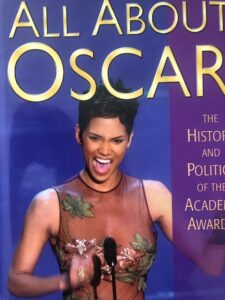UA (Harold Hecht Productions)
John Frankenheimer’s Birdman of Alcatraz is a well-acted, if quite fictionalized biopic of the real-life Robert Stroud, a surly inmate sentenced for life in prison.
Lancaster, right after winning the Best Actor Oscar for Elmer Gantry, immerses himself in the role of a tough man whose life changes by accident.
When a sick bird flies into his cell, he decided to cure it, and in the process, went on to become an internationally recognized expert.
Read about classic female prison drama, Caged (1950)
http://emanuellevy.com/review/caged-3/
No triumph is achieved without obstacles, and here they are represented by Elizabeth Stroud (Thelma Ritter in an Oscar-nominated turn), his overprotective mother, and Harvey Shoemaker (Karl Malden), the tough, reluctant warden.
Miraculously, eve after being sent to Alcatraz, Stroud manages to continue his research of ornithology.
Through a prison riot that Stroud helps orchestrate, he is able to tell his story to Tom Gaddis (Edmond O’Brien), the author upon whose book the movie is based.
The film put on the map Telly Savalas, who received a Supporting Actor Oscar nomination for playing Stroud’s inmate, and went on to become a big TV star.
The only element in the story that doesn’t ring true is Stroud’s romance and then marriage with Stella Johnson (Betty Field).
Considering how static the tale is (mostly set in confined cells), Frankenheimer directs with an assured way, and deserves credits for coaxing great, restrained performances from actors (such as Lancaster and Ritter), who often go overboard.
Cinema of Cruelty: Possessive Mother Disowning her Son
At one point, Stroud is visited by bird-lover Stella Johnson and agrees to go into business, marketing his bird remedies. Stella and he later marry, against his mother’s strong disapproval. This causes permanent rift between mother and son and further disowns him by refusing to support his release petition.
He is abruptly transferred to the federal penitentiary at Alctraz, a new maximum-security institution where he is not permitted to keep birds. Although growing elderly, he remains independent, writing a history of the U.S. penal system that is suppressed by Shoemaker, now warden of the Rock.
Running time of two and half hours is excessive but, overall, the film is engaging and very well shot by ace lenser Burnett Guffey, who went on to win the Best Cinematography Oscar for Bonnie and Clyde, five years later.
My Oscar Book:
Oscar Nominations: 4
Actor: Burt Lancaster
Supporting Actor: Telly Savalas
Supporting Actress: Thelma Ritter
Cinematography (black-and-white): Burnett Guffey
Oscar Awards: None
Oscar Context:
In 1962, Gregory Peck won the Best Actor for “To Kill a Mockingbird,” Ed Begley the Supporting Actor Oscar for “Sweet Bird of Youth,” and Jean Bourgoin and Walter Wottiz for their b/w cinematography for the WWII epic, “The Longest Day.”
This was the sixth (and last) nod of perennial nominee Thelma Ritter, who lost to Patty Duke as Helen Keller in “The Miracle Worker.”
Black-and-white
Running time: 147 Minutes
Cast
Burt Lancaster as Robert Stroud
Karl Malden as Harvey Shoemaker
Thelma Ritter as Elizabeth McCartney Stroud
Neville Brand as Bull Ransom
Betty Field as Stella Johnson
Telly Savalas as Feto Gomez
Edmond O’Brien as Thomas E. Gaddis
Hugh Marlowe as Albert Comstock
Whit Bissell as Dr. Ellis
Crahan Denton as Kramer
James Westerfield as Jess Younger
Len Lesser as Burns (uncredited)
Adrienne Marden as Edith Wilson (uncredited)











